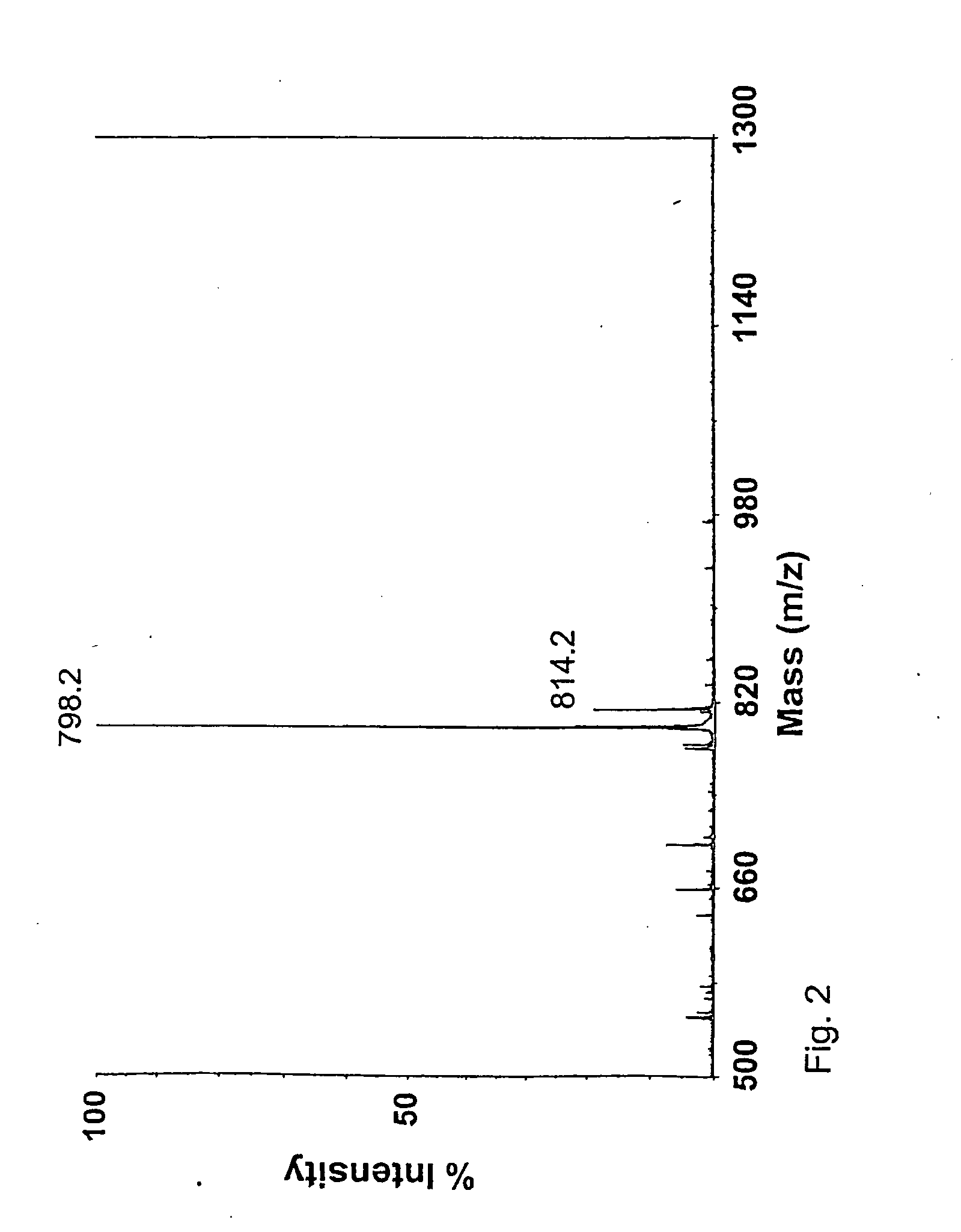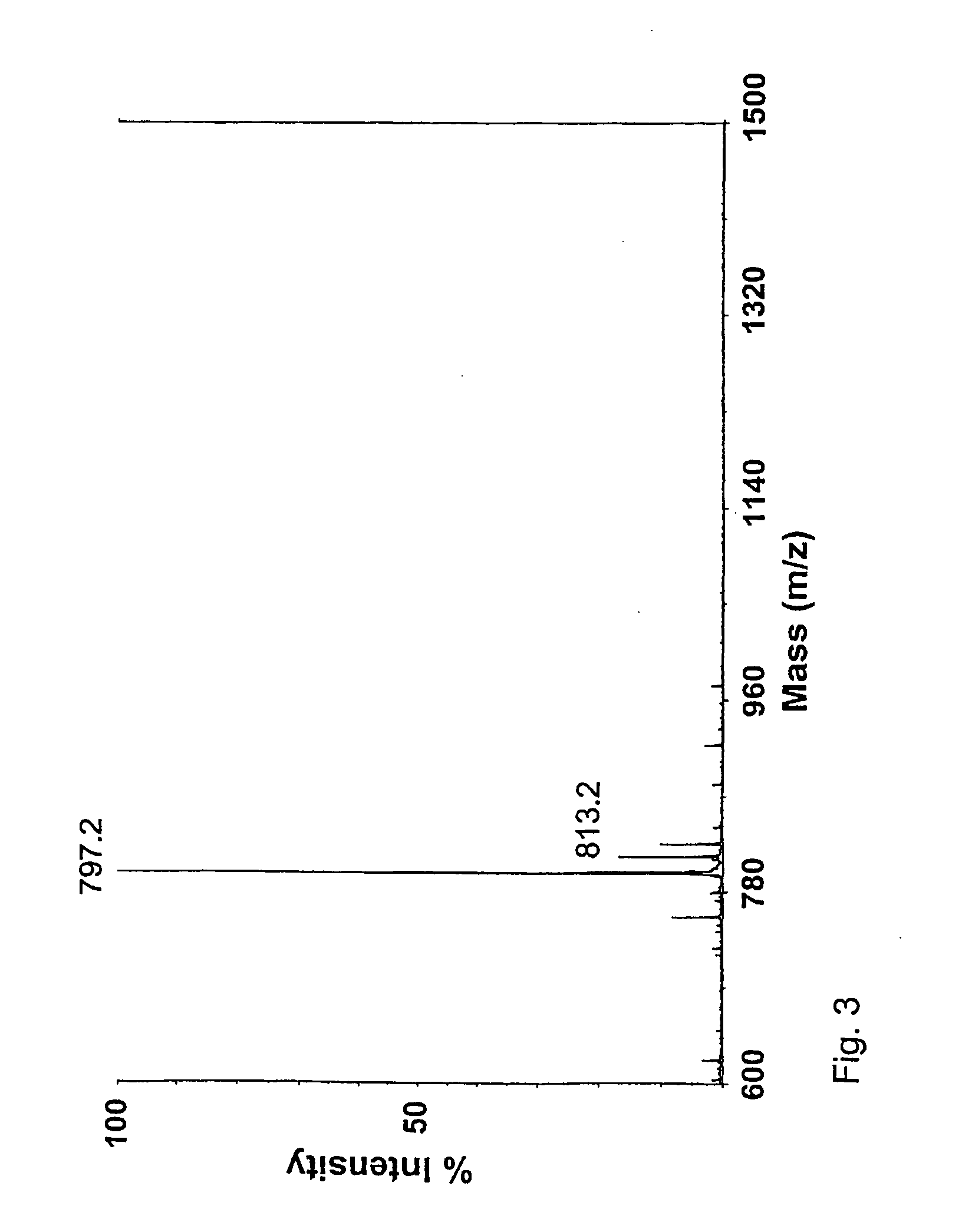Novel binding epitopes for helicobacter pylori and use thereof
a technology of helicobacter pylori and binding epitope, which is applied in the direction of peptides, drug compositions, immunological disorders, etc., can solve the problems of not giving effective binding structure, not knowing the exact sulphation status of chondroitin oligosaccharides, and not being able to predict the binding of even closely related bacterial adhesins
- Summary
- Abstract
- Description
- Claims
- Application Information
AI Technical Summary
Benefits of technology
Problems solved by technology
Method used
Image
Examples
example 1
General Materials and Methods
[0233] Materials—TLC silica gel 60 (aluminum) plates were from Merck (Darmstadt, Germany). Ham's F12 medium from Gibco (U.K.), 35S-methionine from Amersham (U.K.) and FCS (fetal calf serum) was from Sera-Lab (England). The clinical isolates of Helicobacter pylori (strains 002 and 032) obtained from patients with gastritis and duodenal ulcer, respectively, were a generous gift from Dr. D. Danielsson, Örebro Medical Center, Sweden. Type strain 17875 was from Culture Collection, University of Göteborg (CCUG).
[0234] Glycosphingolipids. The pure glycosphingolipids of the experiment shown in FIGS. 7A and 7B were prepared from total acid or non-acid fractions from the sources listed in Table 1 as described in (Karlsson, 1987). In general, individual glycosphingolipids were obtained by acetylation (Handa, 1963) of the total glycosphingolipid fractions and separated by repeated silicic acid column chromatography, and subsequently characterized structurally by s...
example 2
Production of Amidated Chondroitin Type Oligosaccharides
[0242] Chondroitin sulphate A (Sigma) was converted to pyridinium salt by running the sample through cation exchange resin (hydrogen form), after which the solution was titrated to slightly basic pH with pyridine, and then dried in a vacuum sentrifuge. Desulphation was carried out by dissolving the dry sample to DMSO containing 10% methanol, and incubating this solution for 4 h at 80° C. DMSO was removed by extensive dialysis against water.
[0243] Oligosaccharides were produced from the desulphated material by acid hydrolysis in 0.5 M TFA at 60° C. for 18 h. In these conditions tetra- and hexasaccharides with GalNAc at their reducing end are effectively produced. Pure tetra- and hexasaccharides were isolated by use of gel filtration and anion-exchange chromatography. NMR-spectorometry reavealed oligosaccharide with non-reducing terminal GlcA and reducing terminal GalNAc. The hydrolysis method revealed to be surprisingly selec...
example 3
[0246] The binding of Helicobacter pylori (strain 032, several other strains were used in other experiments) to purified glycosphingolipids separated on thin-layer plates using the overlay assay is shown in FIG. 1 panels A and B. These results together with those from an additional number of purified glycosphingolipids are summarized in Table 1. The binding of Helicobacter pylori to neolactotetraosylceramide (lane 1) and the five- and six-sugar glycosphingolipids (lanes 5 and 6) derived from NeuGcα3Galβ4GlcNAcβ3Galβ4GlcNAcβ3Galβ4GlcβCer is identical to results above. Unexpectedly, however, binding was also found for GalNAcβ3Galβ4GlcNAcβ3Galβ4GlcβCer (x2 glycosphingolipid, lane 7) and the de-fucosylated A6-2 glycosphingolipid GalNAcα3Galβ4GlcNAcβ3Galβ4GlcβCer (no. 12, Table 1). Together with the finding that Galα3Galβ4GlcNAcβ3Galβ4GlcβCer (B5 glycosphingolipid, lane 2) also is binding-active, these results suggest the possibility of cross-binding rather than the presence of multiple ...
PUM
| Property | Measurement | Unit |
|---|---|---|
| Volume | aaaaa | aaaaa |
| Volume | aaaaa | aaaaa |
| Volume | aaaaa | aaaaa |
Abstract
Description
Claims
Application Information
 Login to View More
Login to View More - R&D
- Intellectual Property
- Life Sciences
- Materials
- Tech Scout
- Unparalleled Data Quality
- Higher Quality Content
- 60% Fewer Hallucinations
Browse by: Latest US Patents, China's latest patents, Technical Efficacy Thesaurus, Application Domain, Technology Topic, Popular Technical Reports.
© 2025 PatSnap. All rights reserved.Legal|Privacy policy|Modern Slavery Act Transparency Statement|Sitemap|About US| Contact US: help@patsnap.com



